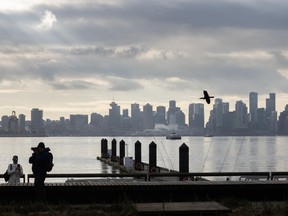The decision to relax view-cone policies in Vancouver has prompted some developers to revise their plans. But building taller can bring added costs and longer completion times.

The City of Vancouver’s decision to relax view-protection policies prompted a flurry of developers to say they’ll seek to build taller, but some in the industry question how much of this new density will actually be built.
Getting approval to add floors means more units can be sold on the same site and there is more money to be made from it. But there might be a tipping point, some say, where it isn’t necessarily more lucrative or even that easy for the density that is being approved to actually get built, even though the value of the land increases because of it.
“The thing about doing bigger, taller buildings isn’t only that they are more expensive to build, but there is an all-or-nothing proposition to them,” said Michael Geller, a longtime developer, real estate consultant, urban planner and retired architect.
If you compare 600 units in one 60-storey building with 600 units spread across three buildings, it’s much harder in the single, tall building to sell the number of units needed to get financing, he explained. There isn’t the opportunity to phase in the process and start by selling and building 200 in one building first.
It’s also the case, he said, that taller buildings take much longer to complete, which increases carrying costs.
“If a six-storey wood frame building takes 12 months or maybe as long as 14 to 16 months to build, an 18-storey tower can take two years. A 60-storey one takes proportionately longer,” he said.
Taller towers have been approved elsewhere in Metro Vancouver, such as in Burnaby where Pinnacle International has the green light to proceed with two residential towers that will be among the tallest in Western Canada at 72 and 80 storeys.
According to Vancouver architect James Cheng, experienced developers know there are other factors that directly affect their profitability.
“Maximum density is not the only answer to increasing profits,” he said.
Increasing allowances for density doesn’t solve some deep truisms, he said.
“Our current Vancouver-area markets are being hit with this triple whammy: building too big, no market to absorb it and it is inefficient to build. That is why so many projects are cancelled and so many are in court-ordered sales,” said Cheng.
But Richard Bernstein, principal at Chris Dikeakos Architects, said changes to Vancouver’s view protection policies are a significant incentive for developers to build higher in order to make their pro forma documents, which chart future income and expenses, work. Building higher can yield more income to help offset construction costs, for example.
Even though he has seen a number of developers switch from higher heights to building in a sweet spot of between 35 to 45 storeys, he doesn’t think it’s as simple as saying there is a specific height after which the costs get too expensive. There are other variables to consider that are unique to each site.
“It still might make sense (to go higher) if the developer bought the site many years ago when land costs were much lower,” Bernstein said.
Others agree that being in a position to take advantage of increased density and build taller buildings requires a number of factors to come together.
“It was great to see the city removing view cones resulting in a meaningful increase in density,” said Jim Szabo, vice-chairman of CBRE Canada. “While this move is lauded, the issue of getting projects built is not solely a density issue.”
He explained that when plans for a single, 30-storey tower change to being a 50-storey one, the cost escalates from $225 million to about $400 million.
“The equity required and the risk profile more than doubles. Very few developers can or are willing to play in this field, meaning very few of these high-density projects will get built,” Szabo said.